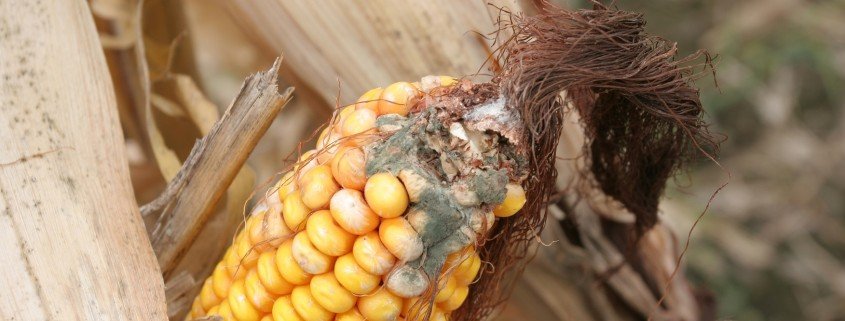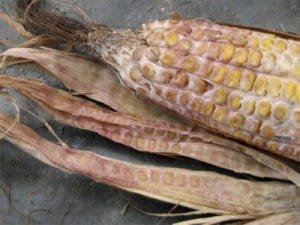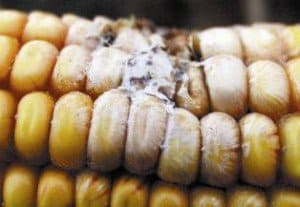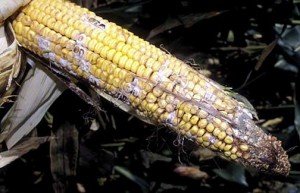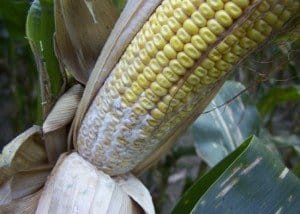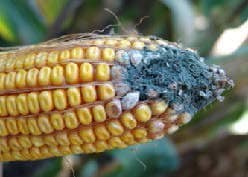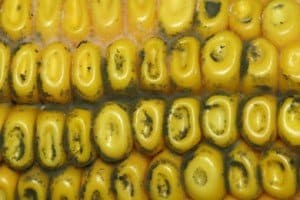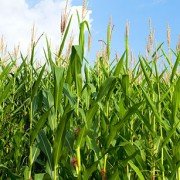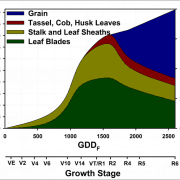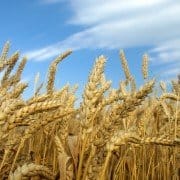Ear Rots in Corn
Ear rots can be difficult to control since weather conditions are critical to the disease development. Rots can establish any time after pollination in wounds created by insects, birds, machinery, and even hail. Rainy weather or heavy, prolonged dews often lead to ear rots in these wounded cobs.
Why are rots a concern?
The direct concern for ear rot disease is yield loss due to poor quality grain. In years when conditions favour development, large portions of fields can be affected. Once fields are infected, other management practices should be followed which can increase cost of harvesting, drying, and storing the grain.
Some of these disease organisms will produce toxic chemicals known as Mycotoxins (toxins produced by fungus). These chemicals are another major concern as they can cause various health problems when they contaminate grain fed to livestock or used for human consumption. It is essential to limit levels of the rots that can produce these toxins.
Scouting
Scouting is the only way to find out if there is an ear rot problem in your field. Strip back the husks on 100 plants scattered throughout the field. If more than 10% of the ears have 25% or more of the cob affected, take the following precautions.
| Disease | Conditions Favouring Development | Mycotoxin Possible |
|---|---|---|
| Fusarium | Warm, dry | Yes |
| Diplodia | Warm, wet | No |
| Gibberella | Cool, wet | No |
| Penicillium | Mechanically or insect injury, kernel moisture greater than 18% | Yes |
| Cladosporium | Wet during ear maturation, delayed harvest | No |
Harvest tips
- Harvest fields as soon as possible (even if you have to dry), where 10% of the ears are affected. This limits further disease development and potential mycotoxin production.
- If damage is localized in the field (common with bird damage), harvest and handle these areas separately.
- Adjust harvest equipment to minimize damage to corn. Clean corn thoroughly.
Post-harvest tips
- Cool the grain after drying.
- Clean bins before storing new grain.
- Check stored grain often for temperature, wet spots, insects and mould growth.
- Test suspect samples for toxins. Pink or reddish moulds are particularly harmful.
Gibberella Ear Rot
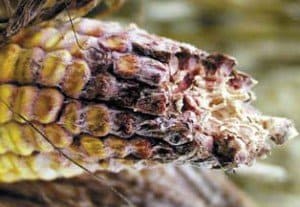
Photo showing Gibberella Ear Rot infection usually occurs from the tip down. Note the pink to red color.
Fusarium Ear Rot
Diplodia Ear Rot
Penicillium Ear Rot
Cladosporium Ear Rot
Contact us
For more information contact one of our Agronomy Solution Specialists or any local Thompsons branch.
Chris Hunt, CCA
Agronomy Solutions Specialist
Phone: 519-676-5411, Ext. 20478 | Cell: 519-365-3593
Jevin Vyn
Agronomy Solutions Specialist
Phone: 519-676-5411, Ext. 20303 | Cell: 519-401-2120
Mike Wilson
Advanced Agronomy Solutions Manager
Phone: 519-676-5411, Ext. 20480 | Cell: 519-809-0284

